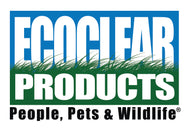Voles, also known as meadow mice, are mainly herbivores and love to feed on a wide variety of grasses, plants, bulbs, and tubers, making your backyard, lawn, and garden a prime target for an infestation. Below is a guide for what you need to know to protect your yard from voles this spring and how to treat them in a fast, effective, and eco-friendly way with VoleX®
How To Spot a Vole
Voles are mouse-like in appearance but usually don’t invade homes and shouldn’t be confused with the house mouse. Voles are active day and night, year-round, and they can breed during any time of the year, with the peak breeding season being spring. Voles are prolific rodents, with females having approximately 5 to 10 litters per year and maturing as fast as 30 days. Voles spend most of their time in their underground burrow system, but you can also spot them above ground. They have a small body, similar to a mouse, with short legs and a short tail. Unlike mice, they have small, partially hidden ears, and when fully grown, they can measure anywhere between 5 to 8 inches long, including the tail. The best way to recognize the presence of voles is to look for their aboveground runways that connect burrow openings. These runways usually have a layer of grass or another cover to hide the multiple burrow openings. Another way to spot if you have a vole problem is to look for greenish-colored droppings in the runways and around the burrows. As they age, vole droppings lose their green coloring and turn brown or grey.
Vole Damage
Voles can cause a wide variety of damage to your lawn and garden. They feed on garden plants, including but not limited to carrots, lettuce, tomatoes, and sweet potatoes. They also cause damage to turf and other landscape plantings. Voles love fruit trees and will gnaw at the bark, causing damage to the tree trunk a few inches above and below ground. If the damage occurs below ground, you would have to remove the soil from the base of the tree to spot it. Voles are poor climbers, but that won’t stop them from climbing onto low-hanging branches and causing damage higher up on trees. Identifying voles quickly is important. Gnaw marks are about an eighth of an inch wide and are scattered irregularly and at various angles, along with droppings, burrows, and runways. If left untreated, voles will continue to gnaw around the trunk or its roots, disrupting the flow of nutrients and water, eventually killing the tree.

Management
Stopping voles before they populate in high numbers is essential to the health of your yard and garden. Once vole numbers begin increasing rapidly, the damage they can do can be severe. There are many solutions on the market, and finding the best one can be tricky. Read on to discover the options available to you.
One way to deter voles from destroying your property is to modify the habitat to make it less suitable. This option requires you to change the landscape of your lawn or garden and remove weeds, mulch, and dense vegetative cover. However, this choice may not be for you because it requires a change in the landscape. Another way to keep voles out is exclusion. Wire fences placed at least 12 inches above the ground or the use of cylinders around trees, vines, and ornamental plants and flowers will help keep voles away. Again, this solution costs money and time, so it may not be a viable option for you, especially if you reside in a deed-restricted area or are unable to put up a fence.
Trapping is another alternative available to you, but it will only produce results if the population is small and in a concentrated area. Trapping also requires you to examine the placed traps daily and remove and bury/dispose of dead voles yourself. Baiting and using commercial repellents are also an option, but the pest removal market is full of toxic poisons harmful to you, your family, pets, and wildlife. Most baiting involves using dangerous anticoagulants and must be left out and available for a minimum of five days, requiring multiple applications. Burrow fumigants are ineffective when dealing with voles since their burrowing system is shallow and has many open holes.
Solving Your Vole Problems with VoleX®
After exhausting the many options available to you, you may be wondering how you get rid of voles in the first place. At EcoClear Products, we had our team of scientists do the hard work and research, so you don’t have to! To rid yourself of voles, we recommend VoleX®. When used as directed, VoleX® pellets are effective for indoor and outdoor vole control and are even safe for use around people, pets, and wildlife. Formulated using naturally derived ingredients, VoleX® is suitable for year-round use. VoleX® works from the inside out to exterminate voles, then dries them out after death to reduce odor by as much as 90%. Once ingested, active ingredients in the pellets coat the vole’s stomach lining, blocking all messages from the stomach to the brain. This blockage causes voles to stop wanting water, leading to eventual dehydration and death. VoleX® is a quick, worry-free option that is safe for your pets, friends, family, and the environment. Unlike other options, VoleX® is cost-effective and does not require you to change the landscaping of your lawn and garden, install expensive fencing, or deal with toxic chemicals. Shop VoleX® on our website or from retailers near you.
Directions for Use
To use VoleX® on your property, first, locate vole runs or other areas where you believe voles may be present. Make 1-inch holes every 8-10 inches and place the recommended amount of VoleX® (½ – ⅓ oz. or 10 – 15 gm. Or ⅔ – 1 tbsp. Per hole) into each hole. Wrap in pellets in cling film if you believe they may be exposed to moisture, as exposure to moisture can reduce effectiveness. Replenish pellets as instructed by packaging until there are either no more takes or no vole activity is seen for 2 weeks.





